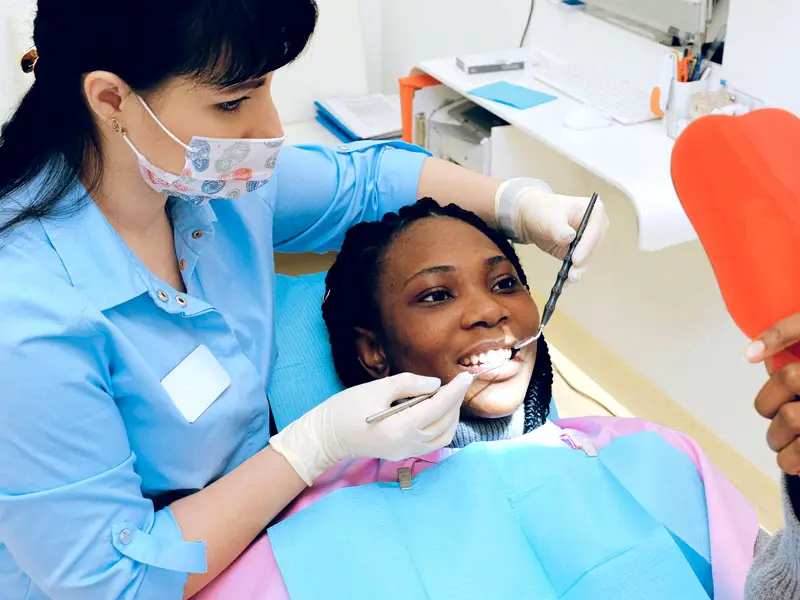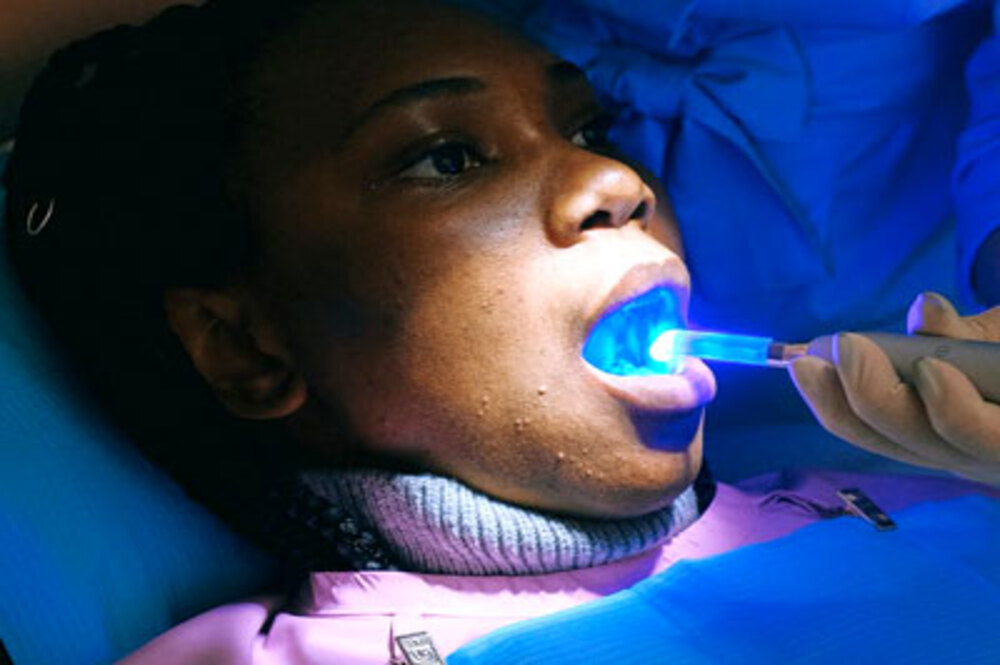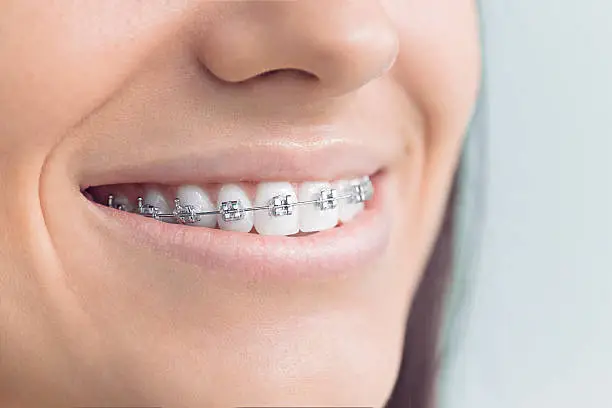Do your gums bleed during brushing? Do u have swollen gums? Do your family and friends complain about your bad breath?? Well, all this happens because of different gum diseases.
In today’s Blog, we are going to discuss all 7 Tips for Maintaining Healthy Gums by Microdent Dentistry.
So let’s begin
Gums are the most important supporting tissue to teeth. Anatomically, teeth are embedded in jaw bone sockets. Gums cover the bone as well as encircle the teeth from all sides, protecting the jaw bone as well as giving cushion to teeth. They not only protect teeth but also secrete a fluid called a gingival crevicular fluid which maintains the moisture on the surface of teeth, so teeth become resistant to the accumulation of plaque and calculus.
Gums have high blood supply and any small injury to gums leads to it’s inflammation and eventually bleeding.
Different Gum Diseases and Their Causes
As we know, gums have a high blood supply, so they are more prone to bleeding.
Swollen gums are a very common clinical finding.
Any type of injury to the gums leads to inflammation. Food stuck between the teeth acts as a source of inflammation.
Faulty brushing technique also has an impact on the health of gums. Such as if the brushing is not proper, it hurts and damages gums tissue.
Vitamin C deficiency is one of the major factors for bleeding gums. The disease known as scurvy happens due to vitamin C deficiency.
Gums disease eventually leads to loss of support to teeth and teeth become mobile Ane eventually they fall off
So maintaining good health of gums is paramount in maintaining the overall health of the oral cavity
Proper oral hygiene maintenance is very important in maintaining the health of gums.
Let’s Discuss How To Maintain Healthy Gums.
The following things help to maintain healthy gums
- Proper brushing technique.
- Use of soft brush & Frequent change of brush.
- Use of manual floss. Or water flosser.
- NO use of toothpicks.
- Check for any deficiencies.
- Treatment of gaps in between teeth.
- Treatment of gaps in between teeth.
1. Proper Brushing Technique.
Follow the brushing technique As advised & recommended by your dental professionals. The technique varies from patient to patient and the dentist advises the technique suitable for your teeth.
Improper Brushing leads to the accumulation of plaque on teeth surfaces and it results in inflammation of the gums.
The brush is made up of small silicon bristles. These bristles are of four types mainly, extra soft, soft, medium, and hard.
2. Use of soft Brush.
Generally, a soft brush is indicated for healthy individuals Unless specifically instructed by the dentist to use a different brush.
Change the brush periodically. Because bristles tend to flare after some months and the brush is of no help in removing plaque, always change the brush when u see the bristles are flaring.
Ideally, the brush should be changed every three months.
3. Use of floss either manual or water flosser.
Floss is the small thread that goes in between teeth and cleans the surfaces there. Floss is highly helpful in situations where there are large gaps between teeth. If any food is getting stuck between the teeth, remove them with flossing.
Regular flossing helps maintain the health of gums.
A water flosser is a device that forcefully sprays water in between teeth and also surrounding gums.
It is completely safe to use the water flosser.
4. Avoid the Use of dental toothpicks.
Dental toothpicks are made up of wood and have pointed ends. These toothpicks are sharp and always injure the delicate gums which leads to inflammation and bleeding.
So never use toothpicks.
5. Check for any deficiencies.
Vitamin C deficiency causes the disease known as scurvy. The oral manifestation of scurvy is swollen bleeding gums. So if you are suffering from long-term bleeding gums then get your vitamin levels checked. And get treated accordingly.
6. Treatment of gaps in between teeth.
If teeth are decayed, and there are gaps between teeth, it leads to food stuck in such areas.
This food causes inflammation of the gums and eventually gums start to bleed.
So any type of decay in between teeth should be properly filled and should be maintained well.
7. Periodical professional dental cleaning and polishing.
Everyone should visit the dentist for regular health checks and if required professional dental cleaning and polishing every year.
It helps to maintain healthy gums.
Conclusion
By following these 7 tips for maintaining healthy gums, you can keep your oral health in great shape and prevent gum disease. Remember to brush and floss regularly, use mouthwash, eat a healthy diet, quit smoking, and visit your dentist regularly for checkups. With these simple steps, you can enjoy a healthy smile for years to come.
Frequently Asked Questions (FAQs)
1. What are the common signs of unhealthy gums?
Common signs include bleeding while brushing, swollen or red gums, bad breath, gum recession, and loose teeth. If you notice any of these, visit your dentist for an evaluation.
2. How often should I visit the dentist for gum check-ups?
It’s recommended to visit your dentist every 6 months for a professional cleaning and gum health check-up to prevent plaque buildup and gum infections.
3. Can poor gum health affect my teeth?
Yes. Gum diseases weaken the supporting structures of the teeth, which can lead to tooth mobility and even tooth loss if left untreated.
4. What is the best brushing technique for healthy gums?
Use a soft-bristled toothbrush and gentle circular motions at a 45° angle to the gum line. Avoid brushing too hard to prevent gum damage.
5. Are bleeding gums normal while brushing?
No, bleeding gums are a sign of inflammation or gum disease. It’s best to consult your dentist to identify the cause and get appropriate treatment.
6. How does flossing help maintain gum health?
Flossing removes food particles and plaque from areas your toothbrush can’t reach, preventing gum inflammation and maintaining gum health.
7. What foods help in keeping gums healthy?
Foods rich in Vitamin C (like oranges, kiwis, and strawberries) and calcium (like dairy products and leafy greens) help strengthen gums and teeth.
8. Can I use a water flosser instead of regular floss?
Yes. A water flosser is a safe and effective alternative, especially for people with braces, bridges, or sensitive gums.
9. Why should I avoid using toothpicks?
Toothpicks can injure the delicate gum tissues and cause inflammation or bleeding. Instead, use dental floss or an interdental brush.
Opening Time
Mon – Sun : 09:00 am To 9:00 pm
Contact Us
+91 7264008000 / +91 9021681032
microdentdentistry@gmail.com
Address
Microdent Dentistry® – Kothrud, Pune
Ground Floor, block 4,Sarvadarshan Housing Society Opposite. Saraswat Bank,Nal Stop, Karve Road, Kothrud, Pune, Maharashtra 411004




